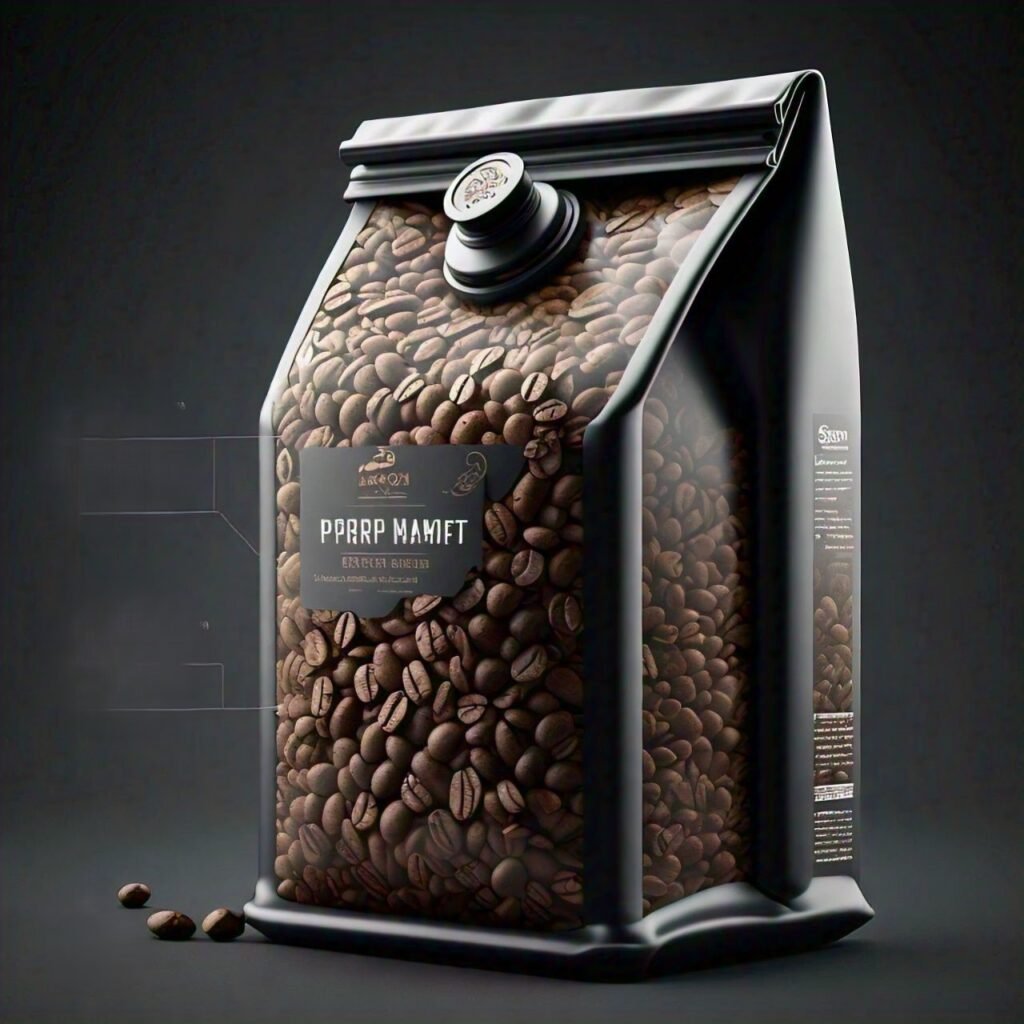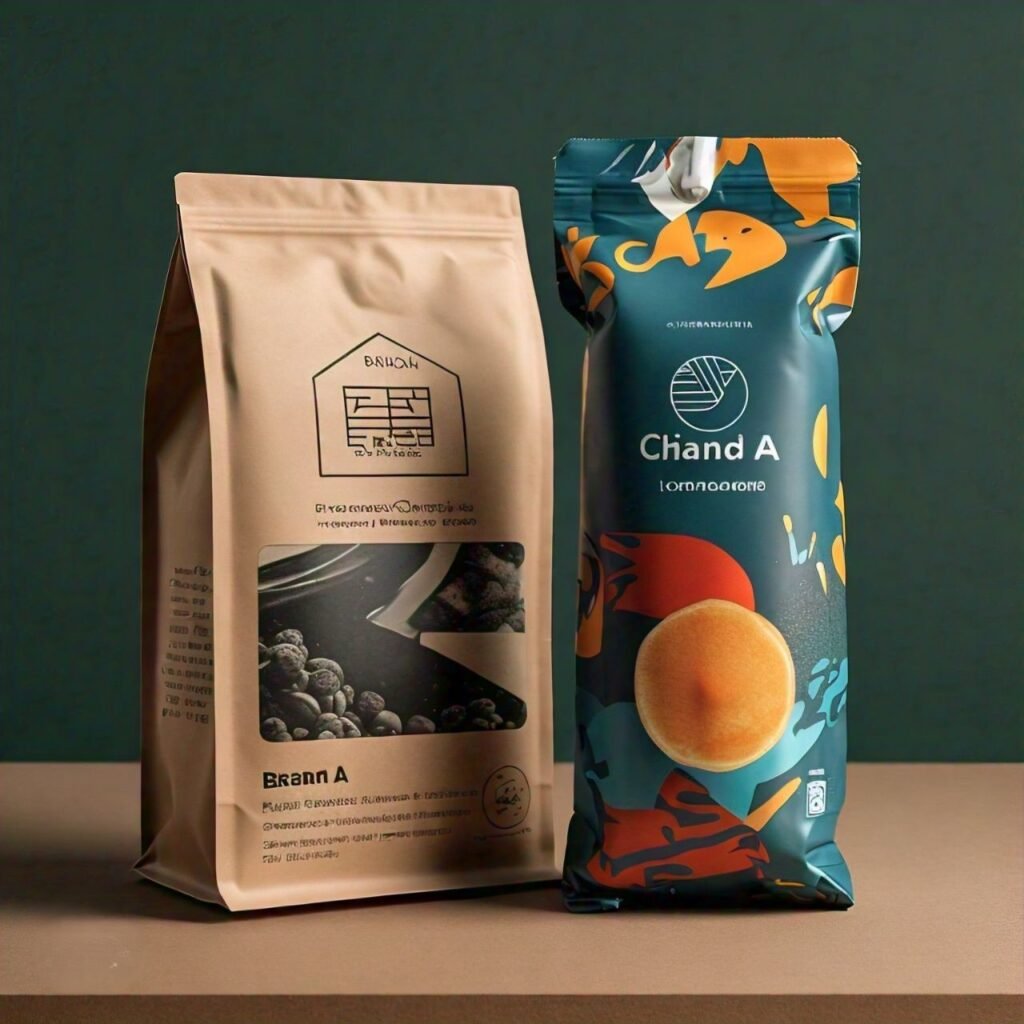Hope gets lost in the bottom of the coffee cup. And indeed, this means a bit more than just deceiving marketing slogans. For some people, coffee is hard to imagine without this and much closer to a culture or a way of life. This, of course, due to the wide variety of brand options that are available in the market. It also requires a more cutthroat form of marketing. The role of coffee packaging in marketing is one of the marketing strategies that people often overlook.
The way coffee is packaged does serve some practical purposes but it is also important in appealing to customers, asserting the brand’s equity, as well as positioning itself within a particular market. This article considers the role of coffee packaging in marketing from all angles through an outlining of tea packaging in terms of design, consumer trends, and trends in the market.
Understanding Coffee Packaging
Types of Coffee Packaging
Coffee is found in many different varieties and each of them will need a different type of packaging. Knowing these types can assist marketers in selecting the most appropriate tactic to their brand.
| Type of Packaging | Description | Advantages |
| Bags | Commonly made from kraft paper or foil | Lightweight, customizable, cost-effective |
| Pods and Capsules | Single-serve units made of plastic or aluminum | Convenient, portion-controlled |
| Cans and Bottles | Typically used for ready-to-drink options | Preserves freshness, reusable |
Functional Aspects of Packaging
Beyond aesthetics, coffee packaging must fulfill essential functional roles:

- Freshness Preservation: Coffee is prone to degradation from air, light, and moisture. Advanced packaging materials extenuate the preservation of taste and scent, allowing end users to obtain a product that is not stale. Such bags are often vacuum packed or have one way valves to keep the beans fresh.
- Protection from Environmental Factors: Packaging protects coffee from mechanical wear and environmental conditions. The materials should be selected in such a way that they can withstand temperature shocks and possible pollution.
Design Elements
Visual marketing is probably the most straightforward technique of attracting the attention of consumers through packaging. Effective coffee packaging design involves the combination of a few several factors:
- Color Psychology: Colors associate feelings and manipulate consumers. For example, something organic might be indicated by muted colors whereas a young audience could be attracted by loud graphics. Institute for Color Research reveals that, 93% of the people decide to purchase a product by its visual and color aspects.
- Typography and Branding Consistency: Type of Font used should fit the Character of the Brand. Contemporary clean designs may suit fonts of a specialty brand but using traditional typography may work for the older generation customers. Consistency in branding for all the packages enhances the overall brand image and make them easily recognizable.
Importance of Imagery
- Use of Graphics and Illustrations: Myriad textual and non-textual factors play a crucial role in the packaging of coffee. Marketers can incorporate images of the location where coffee has been grown or details about their beliefs into the packaging. For instance, a coffee package with images of coffee plantations and the people making the local crafts can connect perfectly with the customers.
- Storytelling through Packaging Design: Storytelling can greatly reduce sustainable practices, ethical sourcing, or culture messages on packages as part of the branding endeavor, thereby making consumers even more interested in the product. This can be said to be one of the most effective marketing strategies.
Brand Identity and Differentiation
Establishing Brand Identity Through Packaging
- Logo Placement and Branding: Properly placing the logo is one of the ways of enhancing brand recall. The materials’ effectiveness greatly reduces when they do not actively voice the brand’s personality and other qualities well known to specific customers, rather than displacing or abstracting them.
- Unique Packaging Shapes and Materials: The unique forms can attract the attention of the customers who visit the shop and the attention of the customers who will just see the product on the shelf. Blue Bottle Coffee, for example, creates uniquely designed tea tins to enhance their product positioning while some other companies have fun with using environmentally friendly materials.
Creating a Unique Selling Proposition (USP)
- Eco-Friendly Packaging Options: Therefore, as the social understanding of sustainability rises, these are the brands that try to wrap their products in as much green packaging as possible and the opposite. Brands that ‘sell’’ reusable or compostable containers for instance have an appeal to such consumers.
- Limited Edition and Seasonal Designs: Seasonal packaging may create a sense of urgency and prompt the purchase of the product. Holiday specific, or special occasion limited edition designs can attract more sales and also help build loyalty towards the brand.
Consumer Perception and Behavior
Impact of Packaging on Purchasing Decisions
- First Impressions and Shelf Appeal: By and large, consumers first interact with products through their package. Attractive packagings seem to incite unexpected spending tendencies especially where the retail crowds are many.
- Packaging as a Reflection of Quality: Package designs that are made of good materials can exude a premium and luxurious look. On the other hand, cheap package design will make a person think that any product is cheap. Companies have to make sure that their packaging does not contradict their target market.
Emotional Connection Through Packaging
- Nostalgia and Heritage Designs: Packaging which triggers any kind of nostalgia tends to please consumers – this has been emotional branding at its best. Consumers who appreciate consumers’ brands that use the heritage designs or the local aspects in their brands.
- Engaging with Consumer Values: Most of modern day consumers have found some of these brands appealing. This can make brand loyalty and trust when the packaging speaks of ethical way of sourcing the product and fair trade and community initiatives.
Innovations in Coffee Packaging
Technological Advancements

- Smart Packaging Solutions: Consequently smart technology has increased the application of consumer-engaging packaging. Where codes on the packages can tell about the coffee and the ways of making it, recipes as well even after the purchase.
- Sustainable Materials and Practices: There is a growing trend of purchasing sustainably produced and flexible coffee packing such as compostable bags and more recyclable materials in the coffee sector. Actually, while those companies turn out to be beneficial for the environment, such companies kill two birds with one stone in terms of consumer concerns.
Trends in the Coffee Industry
- Minimalist Design Trends: There has been a growing tendency in design towards Minimalism where clean lines and minimal color tones have become the option for most brands. This is especially fitting for consumers who look for honesty and transparency in brands.
- Personalized Packaging Experiences: In today’s market, it is clear that customization is gaining popularity. Offering personalized packaging solutions, such as unique labels or customized blends, allows brands to enhance their customer’s experience in an efficient way.
Case Studies
Successful Coffee Brands and Their Packaging Strategies

- Brand A: Eco-Friendly Packaging Initiative
Brand A has positioned itself as a dominant force in the coffee market by incorporating compostable components into its packages and advertising them. It is evident that their ideology positively appeals to the customers resulting in customer loyalty and retention. - Brand B: Innovative Design Approach
Brand B puts the use of eye-catching colors and interesting forms to attract attention to their white papers. Seasonal trends aside, it is their special packaging transformations that cleverly marketed the product and in turn sold it quite well.
Lessons Learned from Packaging Failures
Implementing every single strategy concerning packaging does not mean that every single one would be effective. Failure to understand the target market or disregard for quality may result in severe consequences to the brand. An example of a coffee company adopting gaudy and loud colors on the packaging, even though its target market census did not call for that, illustrates how a company can make branding decisions that do not align with consumer preferences.
Conclusion
Out of the numerous factors which help to promote sales, one of the most important is the role of coffee packaging in marketing. In addition to offering protection, it helps to communicate with potential consumers in an emotional as well as a visual sense. Well designed coffee packing can create and foster a brand image, lure customers to buy a product, and even cultivate brand loyalty. With changing consumer tastes, I suppose, the need for some creativity and environmental concern in product packaging will be on the increase.
In each coffee packing design for the future adjusting it to the current trends and technological development will be the practice. Companies that appreciate and take advantage of the many aspects of packaging will not only exist but will do well in such a dynamic environment. All in all, coffee packing is more than just a shield; it is a potent marketing device that embodies the brand’s narrative, principles, and assured quality.
Read More About Digital Marketing on The Experts Tech.

